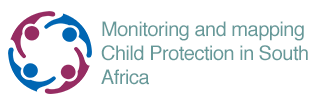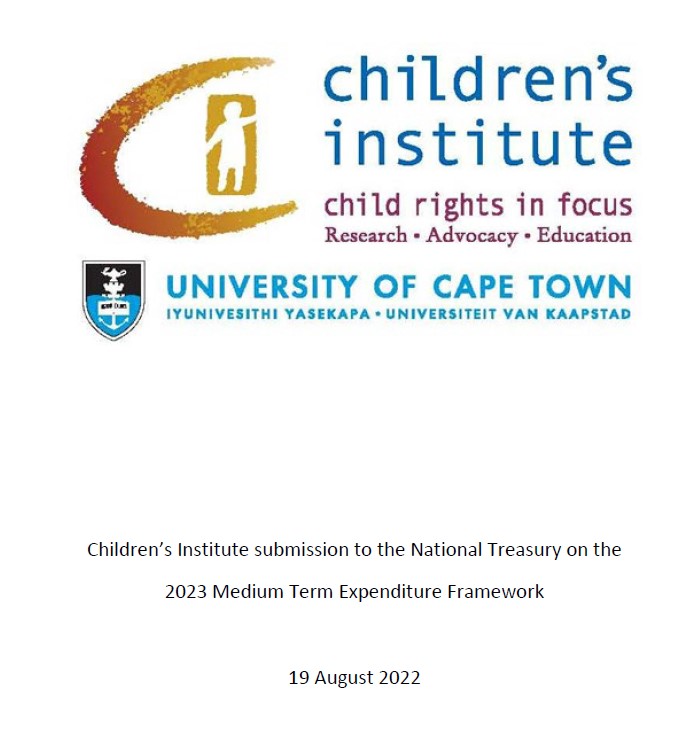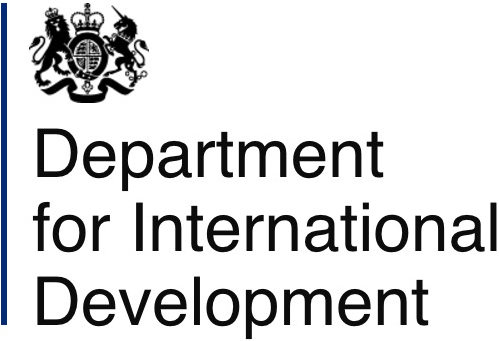Definition
Rape is the unlawful and intentional sexual penetration of a person without consent. This indicator shows the number of counts of rape against a child under the age of 18 years as recorded by the South African Police Service in a given financial year.Data
Source
South African Police Service crime data, 2013/14 – 2016/17 (child victims only, accessed November 2017). Maps are based on 2016/17 crime data. Analysis by Aislinn Delany, Winnie Sambu & Katharine Hall, Children’s Institute, University of Cape Town.
Notes
1. Children are defined as persons aged 0 - 17 years. 2. The reference period for the crime statistics is a financial year which runs from 1 April to 31 March the following year, as per the official crime statistics. 3. Where no counts of this category of crime were reported (0 count), the map appears blank. 'District' boundaries displayed here are an approximation of the municipal district boundaries and are made up of the precincts that fall within each district, with the precinct boundaries 'dissolved'.
What do the numbers tell us?
A total of 15 453 counts of rape of a child were reported to SAPS in 2016/17. The crime of rape in South Africa is defined by Criminal Law (Sexual Offences and Related Matters) Amendment Act 32 of 2007, which expanded the previous legal definition of rape and made it gender neutral, acknowledging that males and females can be both victims and perpetrators of rape.
Rape tends to be under-reported because of the trauma, stigma and fear associated with it. Crime data is widely recognised as an under-estimate when it comes to sexual offences. Surveys can be used to estimate levels of under-reporting by asking how many experiences of sexual offences are reported to authorities, but there is currently no such estimate for children in South Africa. The 2016 Optimus study on child sexual victimisation in South Africa found that boys were less likely to report than girls, and that familiarity with and fear of the perpetrator were common reasons for children not reporting sexual offences.1
The rate for rape of children in 2016/17 stood at 83 rapes per 100,000 population. This includes a few counts of compelled rape, in which a third party is forced to carry out the rape. This means that for every 100,000 children in the country, 83 rapes were reported. The graphs above provide absolute counts of crime but they do not take different population sizes into account. The table below takes population size into account by providing the rate of child rapes in 2016/17 across province, sex and age group.
The rape rate for children in 2016/17 was highest in the Free State (114 per 100,000); North West (98 per 100,000); Eastern Cape (94 per 100,000) and the Western Cape (91 per 100,000). It was lowest in Limpopo and Gauteng, but even in these provinces the rate stood at 68 and 69 rapes per 100,000 children.
Girls are substantially more likely to be the victims of reported rapes, but boys are victims of rape too. The risk of exposure to sexual violence increases with age - the rate of 21 rapes per 100,000 children under the age of 5 years rises to 173 rapes per 100,000 adolescents aged 13 to 17 years.
______________________________________________________________________________________________________
Rape tends to be under-reported because of the trauma, stigma and fear associated with it. Crime data is widely recognised as an under-estimate when it comes to sexual offences. Surveys can be used to estimate levels of under-reporting by asking how many experiences of sexual offences are reported to authorities, but there is currently no such estimate for children in South Africa. The 2016 Optimus study on child sexual victimisation in South Africa found that boys were less likely to report than girls, and that familiarity with and fear of the perpetrator were common reasons for children not reporting sexual offences.1
The rate for rape of children in 2016/17 stood at 83 rapes per 100,000 population. This includes a few counts of compelled rape, in which a third party is forced to carry out the rape. This means that for every 100,000 children in the country, 83 rapes were reported. The graphs above provide absolute counts of crime but they do not take different population sizes into account. The table below takes population size into account by providing the rate of child rapes in 2016/17 across province, sex and age group.
The rape rate for children in 2016/17 was highest in the Free State (114 per 100,000); North West (98 per 100,000); Eastern Cape (94 per 100,000) and the Western Cape (91 per 100,000). It was lowest in Limpopo and Gauteng, but even in these provinces the rate stood at 68 and 69 rapes per 100,000 children.
Girls are substantially more likely to be the victims of reported rapes, but boys are victims of rape too. The risk of exposure to sexual violence increases with age - the rate of 21 rapes per 100,000 children under the age of 5 years rises to 173 rapes per 100,000 adolescents aged 13 to 17 years.
______________________________________________________________________________________________________
1 Artz L, Burton P, Ward CL, et al (2016) Optimus Study South Africa: Technical report. Sexual victimization of children in South Africa: Final report of the Optimus Foundation Study. Zurich, South Africa: UBS Optimus Foundation.
Technical notes
A crime rate describes the number of crimes reported to law enforcement agencies per 100,000 total population. It is calculated by dividing the number of reported crimes by the total population and multiplying the result by 100,000. We used child population figures generated from the 2016 General Household Survey (Statistics South Africa) to calculate the 2016/17 crime rates.
This crime data was extracted by the SAPS for the Children's Institute in November 2017. SAPS was requested to provide data for all counts of crimes against children (i.e. those counts in which the age of the victim was less than 18 years) in the categories of murder, attempted murder, sexual offences (to be disaggregated by crime category), common assault, assault with intent to do grievous bodily harm, and neglect and ill-treatment. The last category was not provided. Crimes of exploitation and trafficking were not requested. These statistics represent the number of charges or counts of crime, and not the number of registered case dockets or victims.
The definitions of crimes are based on the definitions given in the South African Police Service (2012) Crime definitions to be utilised by police officials for the purposes of the opening of case dockets and the registration thereof on the crime administration system (Consolidation Notice 2/2012, V.001).
The data is presented here by financial year rather than calendar year, as is the case with the official crime statistics. The financial year runs from 1 April to 31 March of the following year. This was calculated by extracting the month and year in which the incident was reported from the Crime Administration System (CAS) number.
This crime data was extracted by the SAPS for the Children's Institute in November 2017. SAPS was requested to provide data for all counts of crimes against children (i.e. those counts in which the age of the victim was less than 18 years) in the categories of murder, attempted murder, sexual offences (to be disaggregated by crime category), common assault, assault with intent to do grievous bodily harm, and neglect and ill-treatment. The last category was not provided. Crimes of exploitation and trafficking were not requested. These statistics represent the number of charges or counts of crime, and not the number of registered case dockets or victims.
The definitions of crimes are based on the definitions given in the South African Police Service (2012) Crime definitions to be utilised by police officials for the purposes of the opening of case dockets and the registration thereof on the crime administration system (Consolidation Notice 2/2012, V.001).
The data is presented here by financial year rather than calendar year, as is the case with the official crime statistics. The financial year runs from 1 April to 31 March of the following year. This was calculated by extracting the month and year in which the incident was reported from the Crime Administration System (CAS) number.
Strengths and limitations of the data
Crime statistics only scratch the surface when it comes to understanding the scale of violence against children because they reflect only those incidents that fit the narrow definition of a crime and only those that are reported to the police. Ideally they should be complemented by other sources of routine data. But in the absence of other reliable administrative data, crime statistics are one of the few sources of surveillance data available for monitoring violence against children nationally.
A challenge with using crime data for monitoring trends over time is that it is not clear what is driving an increase – or decrease – in reported counts of crime. For example, an increase in reported counts of rape may indicate an increase in the occurrence of rape; but it could also reflect efforts to encourage reporting by, for example, making police stations more accessible and ensuring the presence of specialised police officers.
Crime rates are useful for taking population sizes into account and allow for more accurate comparisons between areas and over time. But up-to-date population estimates, particularly for children, are not readily available for smaller areas such as districts or police stations. Considering crime statistics at these lower levels is important because national and provincial level statistics hide large disparities in the levels of crime across different areas.
The primary challenge for child-centred analysis of crime data is the (un)reliability of the age data. The age of a victim may be unknown or may be captured incorrectly at station level. In some cases the age and gender of the complainant rather than the victim is captured on the system. In addition, the recorded age of the victim is his or her age at the time the crime was reported, rather than when the crime took place. Therefore, an assault reported by an 18 year old that occurred a year or two previously (when she was still a child) will not be reflected in this data. These data quality issues further highlight the fact that crime data should be regarded as a considerable under-estimate of the levels of violence facing children in South Africa.
A challenge with using crime data for monitoring trends over time is that it is not clear what is driving an increase – or decrease – in reported counts of crime. For example, an increase in reported counts of rape may indicate an increase in the occurrence of rape; but it could also reflect efforts to encourage reporting by, for example, making police stations more accessible and ensuring the presence of specialised police officers.
Crime rates are useful for taking population sizes into account and allow for more accurate comparisons between areas and over time. But up-to-date population estimates, particularly for children, are not readily available for smaller areas such as districts or police stations. Considering crime statistics at these lower levels is important because national and provincial level statistics hide large disparities in the levels of crime across different areas.
The primary challenge for child-centred analysis of crime data is the (un)reliability of the age data. The age of a victim may be unknown or may be captured incorrectly at station level. In some cases the age and gender of the complainant rather than the victim is captured on the system. In addition, the recorded age of the victim is his or her age at the time the crime was reported, rather than when the crime took place. Therefore, an assault reported by an 18 year old that occurred a year or two previously (when she was still a child) will not be reflected in this data. These data quality issues further highlight the fact that crime data should be regarded as a considerable under-estimate of the levels of violence facing children in South Africa.






 The SAECR 2024 tracks trends on the status of children under 6.
The SAECR 2024 tracks trends on the status of children under 6. 








